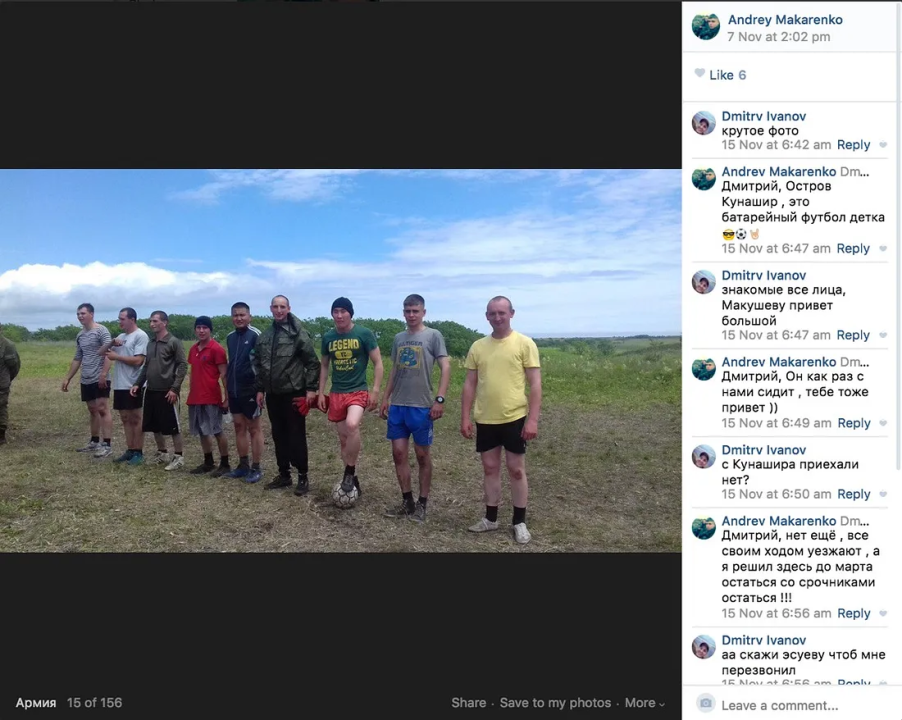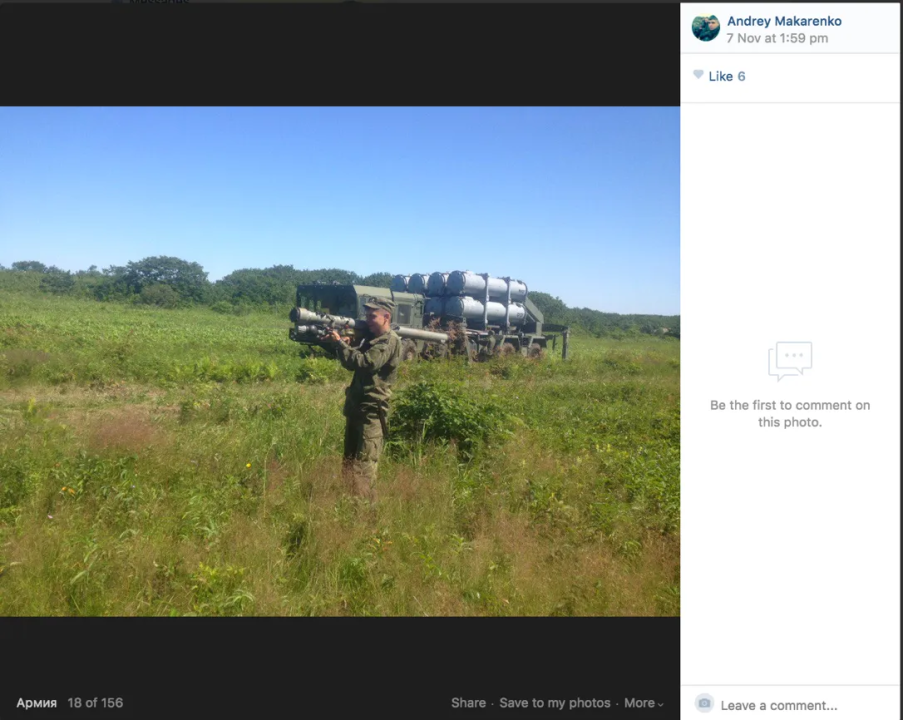Having a Bal
Investigating Russia’s deployment of Bal and Bastion missiles to Kaliningrad and the Kuril islands
Having a Bal
Share this story

BANNER: Учебно-боевые стрельбы расчетов берегового ракетного комплекса «Бал» Тихоокеанского флота (Приморский край) (Source, author: Ildus Gilazutdinov)
On November 21, a source at the Russian Ministry of Defense (MoD) confirmed that Russia had deployed Bastion missile launchers to Kaliningrad, an enclave bordering two NATO members, Lithuania and Poland. On November 22, at the other end of Russia, Bal missile launchers were reportedly deployed to the southernmost Kuril island, Kunashir, while Bastion launchers were deployed to the next island north in the chain, Iturup.
The Bastion launchers fire supersonic Oniks cruise missiles, which are designed to be used against surface ships, but can also be used against ground targets. According to the website of the Oniks’ constructor, NPO Mashinostroeniya, the range of the export variant is 300km, the weight of the warhead is 200 kg, and it is suitable for use against large vessels including landing ships and carrier battle groups.
A diagram published by the manufacturer indicates that the weapon is designed for use with an array of external inputs such as land-, sea- and air-based radars:

ПРЛК (пункт радиолокационного контроля) — Radar control post
СПУ (самоходные пусковые установки) — Self-propelled launchers
МБУ (машина боевого управления) — Command and control vehicle
ВКЦ (вертолетный комплекс целеуказания) — Helicopter reconnaissance complex
ПКП (Передвижной командный пункт) — Mobile command post
The range of the Bastion’s export version is limited under arms export regimes. According to a public briefing from Russian Defense Minister Sergei Shoigu to President Vladimir Putin on November 15, the domestic variant of the Bastion’s range is 350km against sea targets and 450km against land targets.
The Bal anti-ship system, meanwhile, has a range of 130km, according to its manufacturer Tactical Missile Weaponry Corporation (Корпорация «Тактическое ракетное вооружение»). The weight of the warhead is 145kg, and it is advertised as being suitable for use against smaller vessels: “rocket, torpedo and artillery cutters, surface ships with a displacement of up to 5000 tons, and surface transports.”
Bastion launchers were first used in combat in Syria in mid-November. A 23-second video showing Bastion launchers in action in Syria was posted on RT’s Youtube channel on November 15:
Kaliningrad
The press office of the Western Military District confirmed that Bastion launcher would be incorporated into the coastal missile division of the Baltic Fleet. The unit most likely to receive the Bastion system is therefore the 25th Separate Coastal Missile Regiment (military unit 39108) located in Donskoye (54.9446959N 19.9679947E).

At present, little information is available on social media concerning the deployment.
Kuril Islands
More information is available on the Kuril deployment. Russian media reported that Bastion and Bal missile divisions in the Kuril islands would reinforce the newly-formed 72nd Separate Coastal Missile Brigade unit of the Pacific Fleet. The brigade is based in Smolyaninovo, 45 kilometers away from Vladivostok.
Neither Kunashir, nor Iturup has an existing coastal missile brigade.
Currently, there are 3 military units based on Kunashir: The 228th Separate Anti-Aircraft Division, the 46th Machine Gun and Artillery Regiment and 264th Motorized Infantry Battalion.
On Iturup, further to the north, there are 4 units: The 18th Machine Gun and Artillery Division, the 49th Artillery and Machine Gun Regiment, the 110th Separate Tank Battalion, the 584th Separate Repair and Restoration Battalion, and the 911th Separate Technical Support Division. The deployment of the 72nd Separate Coastal Missile Brigade, equipped with Bal and Bastion launchers, therefore adds a new capability to Russia’s forces in the Kurils.
The brigade has an active social media presence. A solder from the unit, Andrey Makarenko, posted an image of himself with what appears to be a Bal missile launcher in the background on November 7, 2016.
An image of a Bal missile launcher for comparison:

In further posts on VK, Makarenko said that he is currently on Kunashir, and is due to stay until March 2017:

His location can be further verified by another image, geotagged to a location near the military complex of Lagunnoye on Kunashir:
The geotag is at 44.054079 145.786399, on the edge of the Lagunnoye military complex:

The hill in the background can be confirmed as Gora Otdel’naya, south of Lagunnoye, by comparison with Google Earth and other shots from the area:


The exact weapon systems carried cannot be identified from this image, but the fronts of the carriers are identical with the Bal carrier shown above. The two vehicles with lowered spikes appear to be communication, command and control vehicles.
A VK post by another user, Yevgeny Grishin, reveals more about the location. This is not geotagged (although another nearby shot is); however, the hills in the background are the same, judging by the elevation and shape of Gora Otdel’naya to the south:

This appears to be a radio receiving and location center, with the antennae set up to triangulate on the location of incoming signals.
Reactions
There is a significant difference between the deployments to the Kurils and Kaliningrad. The Far Eastern deployment was signalled well in advance: Shoigu told TASS as early as March 2016 that Bastion and Bal launchers, along with Eleron-3 drones, would be deployed to the Kuril Islands as part of a planned re-armament.
The first reports of a possible deployment to Kaliningrad, however, only appeared in the Russian media at the end of October, after the DFRLab exposed the covert deployment of two Russian corvettes armed with “Kalibr” cruise missiles to the Baltic.
It is possible that the decision to deploy the Bastion and Bal systems to the Baltic was a quick one, with no time for preparation. However, given the Kremlin’s poor record on transparency (witness the Kalibr deployment), it is equally possible that the decision was taken well in advance, and the announcement delayed to forestall diplomatic fallout.
The deployment in Kaliningrad certainly caused concern in the Baltic States and Poland. According to military experts interviewed by the Russian media, the range of the missile launchers would allow Russia’s Baltic Fleet to close the entry to the Baltic Sea through Danish waters and reach all possible targets on the territory of Poland.
On November 21, the US state department criticized the deployment and said it was “destabilizing to Russian security.” The State Department’s spokesperson added: “We call on Russia to refrain from words or deeds that are inconsistent with the goal of promoting security and stability.”
Putin’s spokesperson Dmitry Peskov defended the deployment on November 22, arguing it was a response to NATO’s expansion: “Russia is doing all that is necessary to protect itself from NATO’s expansion towards its borders. NATO is indeed an aggressive bloc.”
The Lithuanian Ministry of Defense also criticized the deployment, warning NATO that the move is aimed at constraining the movement of NATO ships in the Baltic sea.
These concerns are certainly valid. The combined deployment of Bal, Bastion and Kalibr missiles gives Russia a multi-layered bubble of anti-ship weaponry capable of at least challenging NATO’s access to the eastern Baltic, and, in particular, the three Baltic States.
However, it is important to measure the Russian experts’ comments against the reported facts. According to Shoigu, the system’s range against naval targets is 350km. This gives it wide coverage over the eastern and central Baltic, but it does not reach into the Danish channels:

Unlike the deployment of the Kalibr missiles, with their estimated range of above 2000km, the Bastions and Bals do not radically increase the reach of the forces in Kaliningrad. They certainly reinforce the A2/AD bubble; they would add a further layer of complexity to any force trying to penetrate that bubble. But while the challenge should not be underestimated, the capability of the weapon systems should not be overstated either.
The Kuril Island deployment also raised regional tensions, as Iturup and Kunashir are disputed territories between Japan and Russia.
The deployment of Bal missiles to Lagunnoye gives Russia the ability to target ships approaching from Japan, and to reach the north-eastern tip of the island of Hokkaido.

The deployment of Bastion missiles to Iturup, with their 350km range, provides an overlapping layer of coverage:

The Japanese Foreign Minister said Japan would take appropriate measures to respond to Russia’s deployment. On November 25, Japan formally protested to Russia, with Prime Minister Shinzo Abe saying the move was “deplorable”.
Strikingly, the deployment came only two days after Putin met Japan’s Prime Minister Shinzo Abe on the sidelines of the APEC summit in Peru. Russian media reported that, during the meeting, Putin pledged to cooperate with Japan on the Kuril Islands, but stressing they were an integral part of Russian territory.
Putin is due to visit Japan on December 15. On November 23, Peskov urged Japan not to let the Bastion deployment spoil bilateral relations or undermine the visit, arguing that it “should not in any way influence the centripetal trend which exists in our bilateral relations with Tokyo.”
Putin has seen his bilateral contacts sharply reduced in recent years, including cancelling a visit to France in October after French President François Hollande said that Russia could face war crimes charges for its actions in Syria. The Kremlin appears eager to avoid the further loss of face which another diplomatic rebuff would entail.
Social media coverage
Russian social media coverage of the deployment was split between covering the Kuril Island and Kaliningrad deployments, perhaps due to the fact that Russian media outlets reported on the two separately. This may have been part of a strategy to decrease media coverage of each deployment. Almost 55% of all social media posts about the two Bastion deployments named the Kuril Islands, and only 15% named Kaliningrad.
Despite the fact that the Kuril Island deployment received more attention on social media, the tone was far more neutral. Most posts mentioning the deployment were shares of the news headlines and articles, without substantial interpretation. There was little to no attempt to portray the Japanese as Russophobic for pledging to respond to Russia’s deployment.
In stark contrast, the coverage of Bastion deployment to Kaliningrad used far more emotional language and was dominated by pro-Kremlin accounts which attempted to portray NATO as an aggressive entity and Baltic states as ‘Russophobic’ for criticizing Russia’s most recent military deployment.

A good example of that is a viral video called “Baltic Banana Republics” that got over 51k hits in under a day on YouTube. In the video, Ruslan Ostashko (the editor-in-chief of PolitRussia.com, a pro-Kremlin tabloid) argues that the key export Baltic economies are relying on is Russophobia. Ostashko argues that instead of producing goods, the Baltics are producing Russophobia and then benefiting from it financially through EU and NATO funds. He says that U.S. president-elect Donald Trump’s election will lead to the economies of the Baltics collapse because Russophobia is not something he’s willing to buy. Towards the end of the video Ruslan says that soon, the Baltics will be begging Russia to occupy them again because they will be bankrupt, but he concludes that Russia wouldn’t do that.
Another commentator, Latvian-born pro-Kremlin journalist Igor Korotchenko, responded to Lithuania’s criticism by saying Lithuania was being “Russophobic” and that “there is no need to comment on the nonsense that comes from this marginal European country.” Korotchenko’s article was shared widely on social media and became the most popular article of the day shared on the Russkaya Pribaltika (Russian Baltics) VK.com group, whose tagline is: “All countries have borders with each other, but only Russia has borders with God.”
Conclusion
The deployment of Bastion and Bal missile launchers to the eastern and western ends of Russian territory increases the Kremlin’s military options, and reinforces its anti-access / area denial capabilities along the coastline of countries which it presents as hostile.
However, in the Baltic, the deployment should not be seen as a game-changer. It reinforces the existing A2/AD bubble, but it does not greatly expand it.
The move to the Kurils, however, is more significant. As we have seen, there is currently no coastal missile regiment deployed to the islands. The arrival of the Bal and Bastion launchers, for at least another four months, therefore adds a new capability into the mix. Japan has indicated its displeasure by diplomatic means. The question now remains whether it will take other countermeasures.
This report was updated on 29 November to clarify the range of the export and domestic Bastion variants and correct the status of Igor Korotchenko, who was born in Latvia.



